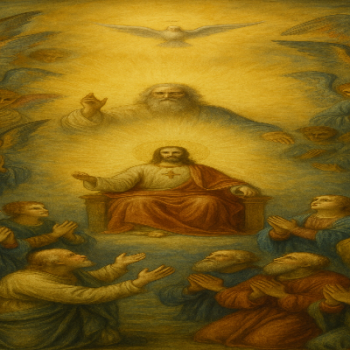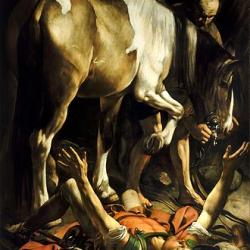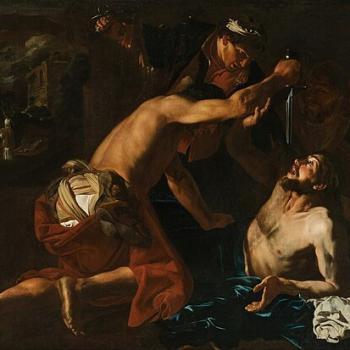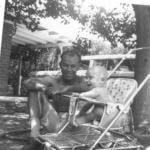By Megan Cullip
Going on from that place, he went into their synagogue, and a man with a shriveled hand was there. Looking for a reason to bring charges against Jesus, they asked him, “Is it lawful to heal on the Sabbath?”
He said to them, “If any of you has a sheep and it falls into a pit on the Sabbath, will you not take hold of it and lift it out? How much more valuable is a person than a sheep! Therefore it is lawful to do good on the Sabbath.”
Then he said to the man, “Stretch out your hand.” So he stretched it out and it was completely restored, just as sound as the other.
-Matthew 12:9-13
I was at a Best Buy in New Jersey, the man taking a look at my laptop had a long beard and a yarmulke. After clicking around for a few minutes, he stopped and said with cheer: “Well, I have to head home for Shabbat. I will put this to the side for somebody else to help you.” I remember being mostly frustrated, which then turned into envy.
There is a puzzling element about this passage, when it comes to healthcare workers, as our call is to aid in the work of healing. Healthcare workers are frequently on call. They are asked to take double shifts. Weekends are rarely regular weekends. What are we to make of the passage exhorting us to “do good on the Sabbath?” Particularly as it directly involves healing and saving lives. A cursory Google search proved to me that, more often than not, healthcare workers were seeking permission from religious leaders to keep working on the Sabbath. Healthcare was the only exception to the rule of rest. After all, there are so many withered hands around, so many sick and dying.
The Isenheim Altarpiece is an altarpiece sculpted and painted by Matthias Grünewald in 1512–1516.
It was painted for the Monastery of St. Anthony in Issenheim near Colmar, which specialized in hospital work. The Antonine monks of the monastery were noted for their care of plague sufferers as well as their treatment of skin diseases. The image of the crucified Christ is pitted with plague-type sores, showing patients that Jesus understood and shared their afflictions. The veracity of the work’s depictions of medical conditions was unusual in the history of European art.
The monks used to lay terminally ill patients in front of the altar piece, so they may see that the wounds of Christ match their own, so they may understand more deeply God’s compassion on their suffering.
One has to wonder though, what of the hospital workers themselves, those who gathered the sick and dying and laid them at the altar. Where do they receive their compassion? Where is Christ the burdened medical worker, when we are used to Christ the crucified?
There’s this poignant scene in Jesus Christ Superstar, the rock opera written by atheists, where the lepers and the poor are all crowding around Jesus, asking for healing, they are touching him, clawing at him, moaning out in agony for him, and then they ultimately begin to crush him. The number functions as a moment in the overall plot to emphasize the increasing internal crisis in Jesus’ own life. He is less able to cope with the pressures of his ministry. He is more consumed about the pressure on himself, both of which lead, in the opera, to his death.
I was astounded when I first saw the scene, as the humanity of Christ played out on the stage. I am not suggesting that healthcare workers often confuse themselves with a Savior.
I am suggesting, however, that their work is one of healing. And there will always be more healing, more demand for healing. There will always be more injury. And it can begin to crush us. We can find ourselves, often slowly, unable to cope with the pressures of this special service.
Here’s where Sabbath comes in.
It is possible to remove ourselves from the Christ example long enough to place ourselves in the role of the sheep trapped in a hole or the man who covers his withered hand in shame. It is automatic for us to place ourselves in the narrative as one who can avoid the Sabbath in the interest of helping the greater good. Oftentimes, however, we are the sheep in need of lifting. We are the struggling humans withered and weary.
One of my favorite musicians is Nina Simone, an African-American songwriter who can lure you in with her alto voice and whose piano playing transports you to different landscapes. She writes mostly jazz and soul music. Sometimes, when I am struggling, I will put a Nina Simone record on and listen to the pain of an artist who was making music during a time of immense strife for people with her skin color. It is reminiscent of a bird in a cage singing to be freed.
The Hebrew root for both “soul” and “rest” is nephesh. Sabbath is important not just for our psychological and physiological well being, it touches our very soul. Sabbath is a time of soul-union with God. As sheep of the flock, as people who sometimes wither, who’s hands sometimes struggle to do the work, we need Sabbath. Humanity has never been consistent in keeping Sabbath, as evidenced in scripture. But Sabbath was always the reset button whenever Israel lost its way.
Sabbath is a gift, a compassionate gift that we have the permission to offer ourselves. May we take it now.

















